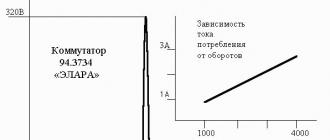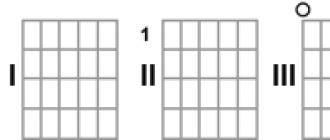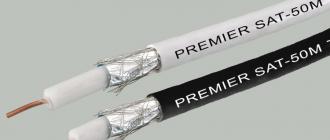Mains voltage, sockets, plugs, adapters and adapters - this is what every tourist who travels to an unfamiliar country should think about. This is especially true in modern world when the vast majority of people travel with their personal electronic devices that require constant recharging - from cameras and mobile phones to laptops and navigation systems. In many countries, the issue is solved simply - with the help of an adapter. However, plugs and sockets are only "half the trouble". The voltage in the network may also be different from what is usual at home - and this is worth knowing and remembering, otherwise you can ruin the device or Charger... For example, in Europe and most Asian countries, the voltage ranges from 220 to 240 volts. In America and Japan, it is half as much - from 100 to 127 volts. If an appliance rated for US or Japanese voltage is plugged into an outlet in Europe, it will burn out.
SOCKETS AND PLUGS
There are at least 13 different plugs and sockets around the world.
Type A

This type is designated as Class II. The plug has two parallel contacts. In the Japanese version, the contacts are the same size. In the American style, one end is slightly wider than the other. Devices with a Japanese plug can be used in American outlets, but the other way around will not work.
Type B
for North and Central America and Japan

This type is designated as Class I. International designation of American type B - NEMA 5-15, Canadian type B - CS22.2, n ° 42 (CS = Canadian Standard). The maximum current is 15 A. In America, type B is very popular, in Japan it is much less widespread. Often, residents of old houses with type A sockets, acquiring new modern electrical appliances with type B plugs, they simply "bite off" the third grounding contact.
Type C
used in all European countries with the exception of Great Britain, Ireland, Cyprus and Malta

International designation - CEE 7/16. The plug consists of two contacts with a diameter of 4.0-4.8 mm at a distance of 19 mm from the center. The maximum current is 3.5 A. Type C is an obsolete version of the newer types E, F, J, K and L, which are now used in Europe. All Type C plugs fit perfectly with new outlets.
Type D
used in India, Nepal, Namibia and Sri Lanka

International designation - BS 546 (BS = British Standard). This is an obsolete British-style plug that was used in the metropolis until 1962. The maximum current is 5 A. Some D-type sockets are compatible with D and M plugs. D-type sockets can still be found in old houses in Great Britain and Ireland.
Type E
used mainly in France, Belgium, Poland, Slovakia, Czech Republic, Tunisia and Morocco

International designation - CEE 7/7. The maximum current is 16 A. Type E is slightly different from CEE 7/4 (type F), which is common in Germany and other Central European countries. All Type C plugs fit perfectly with Type E receptacles.
Type F
used in Germany, Austria, the Netherlands, Sweden, Norway, Finland, Portugal, Spain and Eastern Europe.

International designation CEE 7/4. This type is also known as "Schuko". The maximum current is 16 A. All type C plugs are ideally suited to type F sockets. The same type is used in Russia (in the USSR it was designated as GOST 7396), the only difference is that the diameter of the contacts adopted in Russia is 4 mm, in while in Europe, contacts with a diameter of 4.8 mm are most often used. Thus, Russian plugs fit easily into wider European sockets. But the plugs of electronic devices made for Europe do not fit into Russian sockets.
Type G
used in the UK, Ireland, Malaysia, Singapore, Hong Kong, Cyprus and Malta.

International designation - BS 1363 (BS = British Standard). The maximum current is 32 A. Tourists from Europe, visiting the UK, use conventional adapters.
Type H
used in Israel

This connector is identified by SI 32. The C-type plug is easily compatible with the H-type receptacle.
Type I
used in Australia, China, New Zealand, Papua New Guinea and Argentina.

International designation - AS 3112. Maximum current - 10 A. Sockets and plugs types H and I do not match. The outlets and plugs used by people in Australia and China fit well together.
Type J
only used in Switzerland and Liechtenstein.

International designation - SEC 1011. Maximum current - 10 A. Relative to type C, the type J plug has one more contact, and the socket has another hole. However, Type C plugs will fit Type J receptacles.
Type K
only used in Denmark and Greenland.

International designation - 107-2-D1. The Danish outlet accepts CEE 7/4 and CEE 7/7 plugs as well as type C sockets.
Type L
used only in Italy and very rarely in North African countries.

International designation - CEI 23-16 / BII. The maximum current is 10 A or 16 A. All type C plugs fit L type outlets.
Type M
used in South Africa, Swaziland and Lesotho.

Type M is very similar to Type D. Most Type M outlets are compatible with Type D plugs.
ADAPTERS, CONVERTERS, TRANSFORMERS
In order for the plug from your device to be inserted into an outlet in a particular country in the world, an adapter or adapter is often needed. There are universal adapters on sale. In addition, in good hotels, an adapter can usually be requested at the hotel at the reception.
- The adapters do not affect the voltage and flow of electricity. They only help to align one type of plug with another. Universal adapters are most often sold in duty free shops. Also, in hotels, you can often ask the maids for an adapter for temporary use.
- The converters are capable of providing a short-term transformation of the local parameters of the power grid. For example, they are convenient on the road, where they allow you to use a hair dryer, iron, electric shaver, kettle or small fan just as much as you need. At the same time, they are small in size, and due to the weak hardware base, it is not recommended to use them for more than one and a half to two hours in a row, since overheating of the converter can lead to breakdown of the electrical appliance using it.
- Transformers are more powerful, larger and more expensive voltage converters capable of supporting a long-term operation. Transformers can be used without restrictions for such "serious" electrical appliances like radios, audio players, chargers, computers, televisions, etc.
Most of modern technology, including laptops and chargers, is adapted for use on both networks - 110 and 220 V - without the use of a transformer. Only the appropriate plug and socket adapters are required.
VOLTAGE AND FREQUENCY
Of 214 countries of the world, 165 countries use 220-240 V (50 or 60 Hz), and 39 countries use 100-127 V.

One of the most unexpected situations is when you have come on vacation, you want to charge your mobile or camera, and the plug does not fit into the outlet.
This problem can be solved quite quickly, adapters are sometimes sold directly in hotels or in souvenir shops. But it is better to prepare for such a turn of events in advance.
Today we will talk about the sockets that are found in different countries the world.
Socket types that do not need an adapter
To begin with, consider the standard that is familiar to us, which is adopted in Russia and in Europe - this is type C and F... These types of sockets are also common in all CIS countries, Asia and South America. Supports voltage 220 - 240 V.
Type G
 Those who have traveled to the UK already know that the sockets there are very different from what we are used to. This is type G.
Those who have traveled to the UK already know that the sockets there are very different from what we are used to. This is type G.
It is also found in Ireland, Malta, Malaysia and Singapore.
Type I
 You will definitely need an adapter if you decide to travel to Australia, New Zealand, China and Argentina.
You will definitely need an adapter if you decide to travel to Australia, New Zealand, China and Argentina.
In these countries, type I sockets are used. They can be either two or three (grounded) plugs.
In Australia, sockets are often equipped with a switch.
Type M

South Africa also has its own unique sockets, type M is used there.
At least holes in this type sockets and round, the plug we are accustomed to include in it still does not work. The distance between the holes is different.
In addition, since This type of socket is found in only a few African countries, universal adapters are often not suitable for her.
It is not necessary to have many adapters for different sockets... At airports, you can find shops selling various travel items, including a universal adapter.
In some countries, universal sockets are available that fit European and North American plugs. These sockets can often be found in Thailand:

October 30th, 2017, 06:58 am
In Europe, the voltage in the electrical network varies from 220 to 240 V, in the USA and Japan - from 100 to 120 V - why? Is it really just to create problems for tourists who are forced to carry adapters with them or look for it upon arrival, so as not to let the phone "die"?
When it comes to electricity, you can forget about globalization. Even in the European Union, where the same currency circulates, there are different electrical outlets. The reason for this is the historical factor.

In the era of electrification, inventors from different countries proposed their own versions of the optimal sockets; around the world were built different types electric generators. And the national companies involved in the installation of electrical grids supplied their devices suitable for these grids. Accordingly, various types of plug connectors and sockets were introduced and their networks were designed. The developments of other countries were completely ignored.
Influenced the design of outlets and the availability of materials. For example, during World War II, the UK came up with a three-pin plug with a short copper fuse. This design made it possible to save reserves of copper for military needs.
Now, according to one classification, there are 12 types of sockets, according to another - 15. Moreover, sockets of one type sometimes accept plugs of another. However, upon learning that the country you are going to has the same type of outlet as at home, do not rush to rejoice! This is a solution to only half of the problem. In different parts of the world, the voltage and frequency of the current may differ.

Classification of types of sockets and plugs in different countries of the world
The most common are two standards: European - 220-240 V at 50 Hz and American - 100-127 V at 60 Hz. It is not worth checking what will happen if an electrical appliance operating from 100-127 V is plugged into an outlet with 220-240 V.
In some countries, one should be on the alert at all. For example, in most parts of Brazil, 127 V is used, but in the north of the country there is 220 V. And in Japan the voltage is the same everywhere - 110 V, the frequency is different: in the east, 50 Hz is used, in the west - 60 Hz. The reason is simple: first, German-made generators with a frequency of 50 Hz were purchased for Tokyo, and soon after that, American ones with a frequency of 60 Hz were supplied in Osaka.
Perhaps someday a single standard will be adopted. A universal socket for all types of plugs has already been developed. But for now it is up to everyone to establish it or not. In addition, you first need to come to a single voltage standard. And this comes up against huge financial costs for re-equipment and re-equipment of transformer substations, replacement of sockets and plugs. 
Something about sockets and their use from my own experience
When going on vacation, make sure that you will not be left without your smartphone if it runs out. The sockets are not the same everywhere, as are the mains voltages. If the supply voltages in this country are suitable, it remains to acquire such an adapter or find out in advance where to buy it on the spot or order charging with such a plug. In this article, we will tell you about the types of sockets and how many volts are in the outlet in different parts of the world.
Voltage and frequency
All countries in the world use alternating current in their electrical networks... The difference lies. There are two common frequencies:
The voltages also differ - 100, 110, 115, 120, 127, 220, 230 or 240 volts. At the same time, the voltage and frequency may be different in different regions of the same country, as, for example, in the eastern part of Japan, a network with a frequency of 50 Hz, and in the western part - 60 Hz. This may be due to the fact that electrification took place at different times or part of the country was part of another country. On the map below you can see how many volts are in which country in the world.

Sockets and Plugs
Everyone knows that sockets are used to connect electrical appliances to electricity. Their connectors can be of different shapes and locations.
Types of sockets are marked with Latin letters from A to M - a total of 13 varieties, let's take a closer look at them.
Flat blade plug - used in America (North and Central) and Japan. At the same time, in Japanese plugs the contacts are the same, and in American plugs one of the pins is wider than the other.

Similar to "A", differs in that there are three pins - one of them is ground. A plug of type A is suitable for such a socket. Its design allows a current of up to 15A to pass. In Japan, it is less common than "A". Please note that in the socket and plug, one of the leads may be wider at the end than the other.


Type C- more familiar than the previous ones, there are two round pins with a diameter of 4.8 mm, earlier - 4 mm. Used in almost all European countries and in Russia. The difference in diameters is the reason that modern, so-called "Euro plugs" often do not fit into Soviet sockets.
Type F differs from type C by the presence of grounding contacts.

Sockets and plugs of varieties D and E are similar to C and F, they also provide grounding contacts, but for type D it is located on the plug in the form of a third pin, and in E it sticks out of the socket, respectively, in the plug there is a hole.
They are used in India, Nepal, Namibia, Sri Lanka, and the maximum current of these products is 5A. The middle pin is thicker and longer than the other two.
Type E- in France, Belgium, Poland, Slovakia, Czech Republic, Morocco, Tunisia. They carry a current of up to 16 A. They perfectly accept plugs "C" (diamond-shaped as in the picture above, round - will not fit), and some universal plugs of the F (E) type - with a hole as shown above.

Type D is also very similar to Type M and plugs with these types of receptacles are often compatible. They can be found in South Africa.

Used in Great Britain and Ireland, as well as Malaysia and Singapore, Hong Kong, Cyprus and Malta. The maximum current is 32 A.

Israel uses sockets type H They are three-pin, and the pins can be flat (old) or round (new). At the same time, new sockets are used with plugs with round and square leads. In addition, “C” plugs are suitable for such sockets. (And the voltage and frequency in Israeli networks almost coincides with ours - 230V, 50 Hz).

Also with three pins used in Australia and New Zealand, as well as in China, Argentina, Papua and New Guinea. Withstand current up to 10 A.

Sockets J with three pins on the plug are used in Switzerland and Liechtenstein. These outlets are compatible with “C” plugs.

Denmark and Greenland use sockets and plugs type K.


Used in Italy and found in North Africa. These are three-pin plugs and sockets, the pins of which are located in one row.

To summarize: in the table below you can see a summary of what sockets, voltages and mains frequency are used in the countries of the world.

What if I am going to another country with my equipment?
Most modern electronics are powered. And for them the supply voltage is often not important. To make sure of this, you need to study its characteristics - they are indicated on the sticker on the cases, or are cast on it.
So versatile multipurpose.

For example, you can insert most of the plugs in the world into this one, and it will fit into sockets like C (not all), D, F, E and others.
To power equipment such as a blender or other devices with electric motors, it is often the nominal voltage that is needed, and when it decreases, either the power will decrease or the engine speed. In this case, they will work in countries with the same voltage as at home, regardless of the type of outlet.
It is better to buy electric shavers with rechargeable batteries, because they also run on an electric motor, and in the case of using rechargeable devices, you do not have to change the charger.
Write about your experience of traveling abroad, what sockets you saw and how you powered your appliances in the comments!
Sockets in the USA are so different from Russian sockets that without an adapter (adapter), you will not be able to use American sockets. When setting out, it is important to take into account the peculiarities of American outlets - you can in advance or ask the hotel what sockets they have. There is also a difference in voltage, so difficulties may arise when using household appliances and charging. mobile devices... For example, some tourists report that due to the power outlets in the United States, their hair dryer does not work as powerful or the phone charges more slowly.
What are the sockets in the USA
The most important thing that a tourist needs to know is that the outlets in the USA are different, not like in Russia. They are very different, and it will not be possible to insert a domestic plug into them. Many have seen in Hollywood films what an outlet looks like in the United States, but let's refresh our memory:
As you can see, the sockets in the USA are completely different, not like in Russia, Ukraine, or Europe. They differ in that it is impossible to insert a standard Russian plug into them. Instead of the standard rounded slots, two rectangular holes are used. It is already clear what the sockets look like in the USA, but if the outlet is different, then the plug is different? Yes, the US plug looks different too, check out the following photo:

Therefore, if you want to use the equipment that you took with you from Russia, then you will definitely need an adapter. Since the Russian socket plug will not fit American sockets.
How many volts are in America sockets
The standard voltage in the United States is 100 Volts, while in Russia, all equipment is designed for 220-240 V. This explains why Russian or Ukrainian equipment behaves so strangely in the United States. Volts, they are also voltage, in the American power grid differ from Russian ones. But the principle of grounding does not differ. There are grounded outlets and the ground looks the same as in European outlets. Pay attention to the 3rd hole in the socket, it is the ground:

Before using your hair dryer, laptop, charger, etc., it makes sense to study in detail specifications devices - possibly existing devices will work. But there is also a technique that is highly voltage dependent and can fail.
Can I use equipment from Russia
If you are traveling as a tourist, then yes, in 99% of cases you can use equipment from Russia in the USA. The main thing is to buy an adapter. If you are planning to move to the United States for a long period of time, then all Appliances better to buy directly on arrival. In total, it can turn out to be expensive, but you can always find budget models. Another plus is that you don't have to carry a heavy load from your home country.
Those who want to use equipment from Russia / Ukraine / Europe in the USA need to prepare. For example, if you are interested in charging a laptop in the USA, then simply study the characteristics of your adapter:

So you will find out all the requirements for the electrical network and be able to understand if the equipment will burn out and deteriorate. It is important to understand that domestic equipment in 99% of cases will not burn out with insufficient voltage, only it will not function normally. But American technology in Russia, on the contrary, will probably burn out, since American technology, which is not designed for the international market, is designed for low voltage.
For example, you can use a hairdryer from Russia only at full speed, while the device will blow as if it were turned on in the weakest mode. The same applies to ironing and other equipment. Imagine as if your technique was supplied with 2 times less energy than necessary.
As far as mobile phones are concerned, there will be no major charging problems. But the process will take a lot of time, because it will take several times longer to charge the device than in Russia. In case of mobile phone, we recommend buying a new charger. The charging speed depends on it, and not on your smartphone.
Adapter and plug for American socket
Using a special adapter, you can easily connect any device. But you need to take care of its acquisition in advance - you are unlikely to want to walk the streets of an unfamiliar city, in search of suitable adapter for the outlet. An adapter for an American outlet looks like this and you can:

Many hotels provide guests with such devices, but this option is not available in all hotels. And most importantly, it is often necessary to simultaneously recharge the phone, dry your hair and connect a video camera to the network - in this case, one adapter will not be enough. For those who travel often, we recommend for 3-5 dollars, for example this:

Suitable for Russia, Europe, USA, England, Australia, New Zealand, Mexico. In the assembled version, it takes up a minimum of space.

Here are all the supported connectors:

It costs 3-5 dollars, delivered to Russia free of charge, came to me 19 days after payment. You can buy at.

In addition, if you want to charge your phone, then it is better to buy not an adapter for an outlet, but USB adapter with which you will charge the phone. For example, you can buy a similar one:

You can buy an adapter at home by ordering it online. On AliExpress or Gearbest, you can find adapters and adapters for just a couple of dollars. You can also buy an adapter in duty free right before your trip. Adapters can also be purchased from the air shop when you fly on.
If you postpone this question until a trip to New York or another city in the United States, you will be unpleasantly surprised. Such adapters and adapters cost $ 20-40, which is quite expensive. In this video, you will learn more about American plug adapters:






